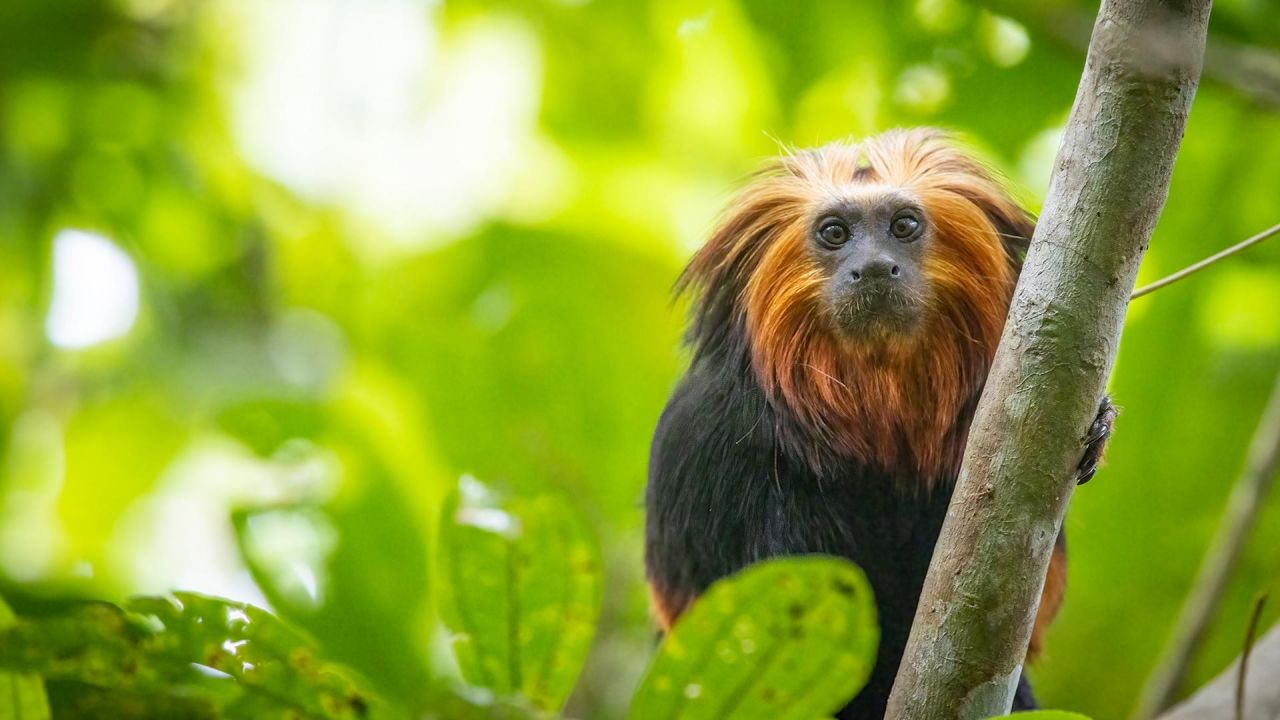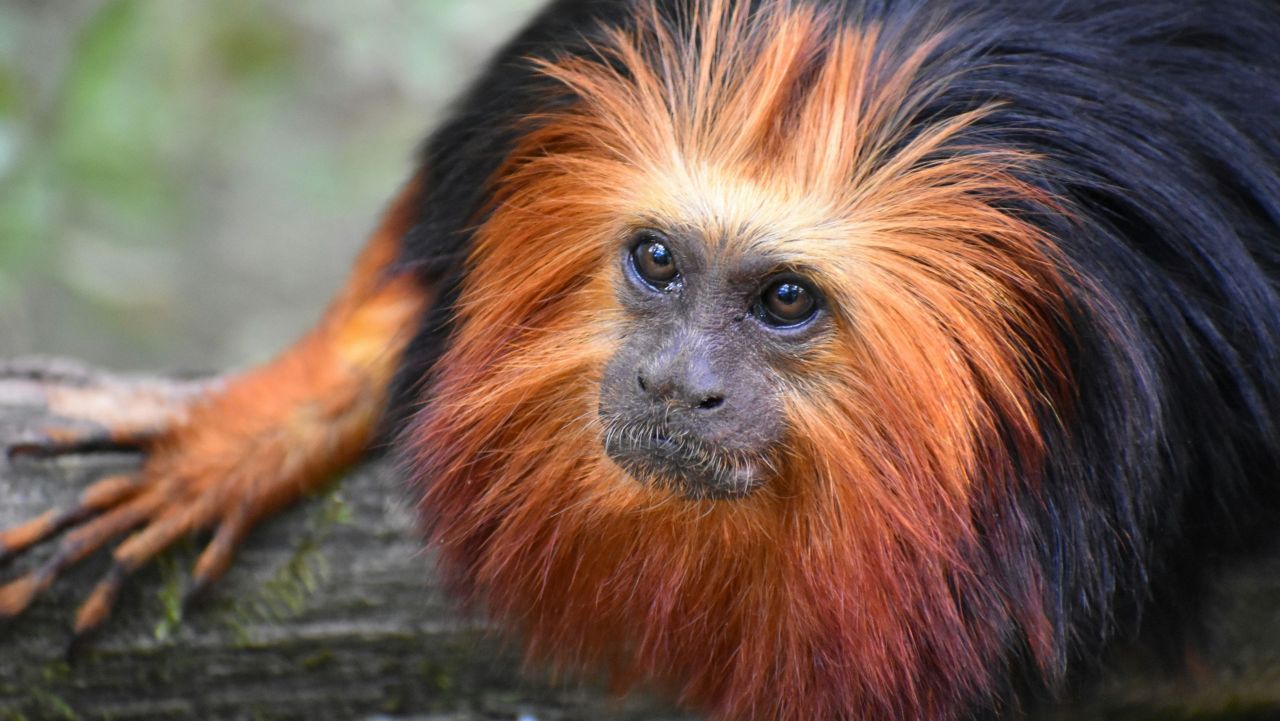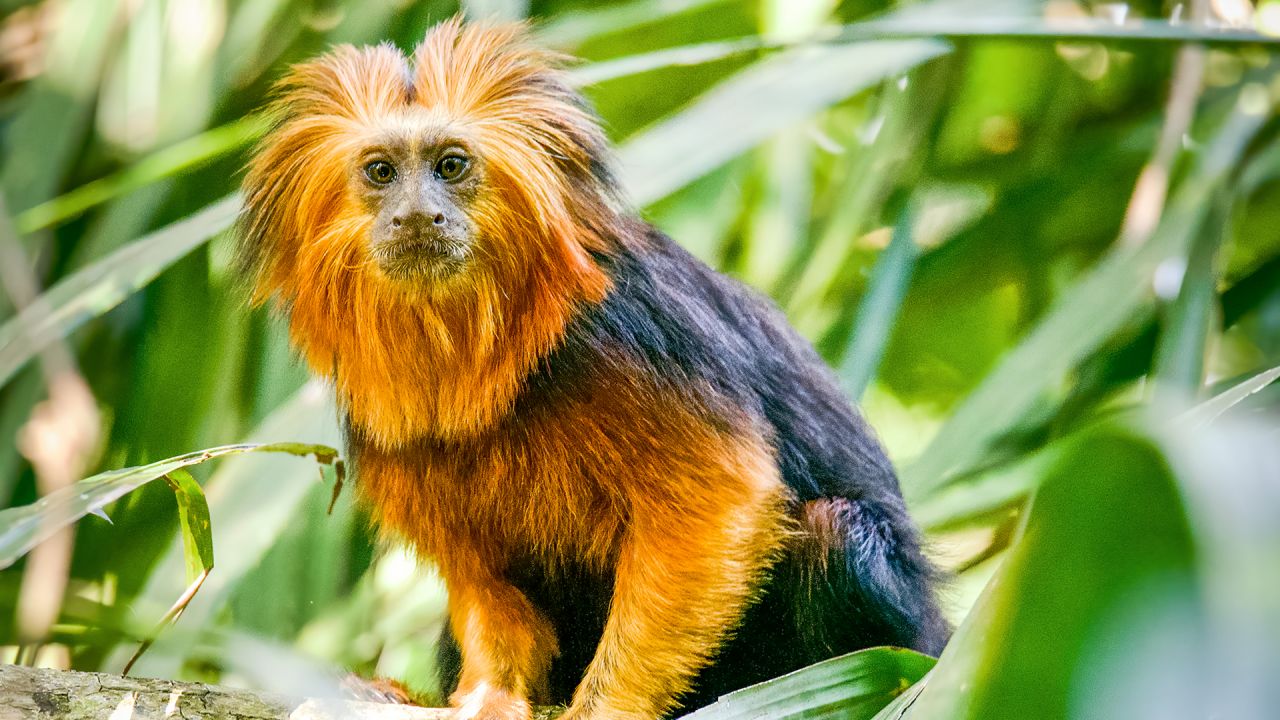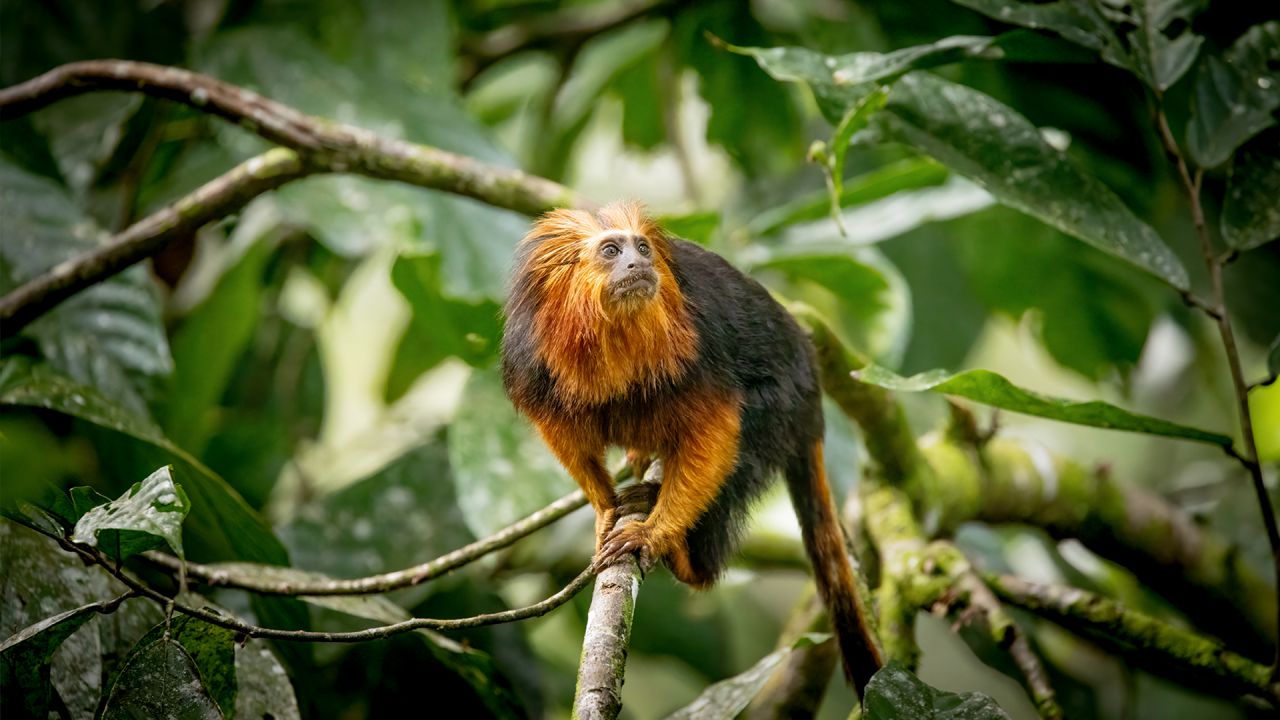
A golden-headed lion tamarin, Atlantic Rainforest, Brazil. Credit: Photography Joseph Shepherdson © BBC NHU
Golden-Headed Lion Tamarin (Leontopithecus chrysomelas): a lion tamarin endemic to Brazil.
Kingdom: | Animalia
Phylum: | Chordata
Class: | Mammalia
Order: | Primates
Family: | Callitrichidae
Genus: | Leontopithecus
Species: | L. chrysomelas

Size and Weight:
Golden-headed lion tamarins weigh 17 to 25 ounces. They measure 8 to 13 inches in body length, plus a 12 to 15-inch long tail. Males and females are similar in size.
Appearance:
There are four species of lion tamarins. Golden-headed lion tamarins are named for their striking mane of golden-orange hair, which is in contrast to their mostly black bodies. Their legs and tails are also golden-orange. These tamarins resemble other species of tamarins with sharp canines and small bodies and heads. They have non-opposable thumbs and claw-like nails on all digits except for the big toe. Their long digits are used for the forging of small insects and vertebrates.

Diet:
These omnivores feed on fruit, flowers, nectar, insects, exudates, and small invertebrates. Their diet mainly consists of soft, sweet fruits. Tamarins, as well as marmosets, play a large role in seed dispersal. They digest and deposit the seeds from many of the fruits they eat away from the parent plant. These seeds may also help to dislodge intestinal parasites in the monkey’s digestive tract.
Habitat:
They can be found in the tall evergreen broadleaf tropical forests and semi-deciduous forests along the Atlantic coast of Brazil. In the forest’s canopy, they roam at 10 to 33 feet up in the trees.
Geography:
Golden-headed lion tamarins are found only in Brazil. Habitat destruction has confined them to the southern part of the state of Bahia, Brazil.
Breeding:
Tamarins are believed to be monogamous. During the breeding season, typically only one female in each group breeds. They breed once each year, often during the warm and wet season between September and March. Following a four-month gestation period, the female often gives birth to twins. Both parents take an equal part in raising their young. Females reach sexual maturity at about 1.5 years of age, while males reach it at about 2 years of age.
Social Structure:
Golden-headed lion tamarins live in family groups of five to seven individuals. This group typically consists of a mated pair plus their youngest offspring. Adults of the same sex are very aggressive toward one another in defense of a territory. Their home range usually consists of 99–247 acres, depending on the availability of food. Their home range is smaller if there is a higher availability of food, therefore less energy is needed to defend it.

A golden-headed lion tamarin, Atlantic Rainforest, Brazil. Credit: Photography Max Kölbl ©
Lifespan:
They are known to live about 15 years in captivity.
Threats:
The greatest threats to these tamarins are deforestation and habitat loss. Only one to five percent of Brazil’s original Atlantic forest remains. Other threats include fires and the illegal removal of animals.

A golden-headed lion tamarin, Atlantic Rainforest, Brazil. Credit: Photography Joseph Shepherdson © BBC NHU.
Conservation Status:
Golden-headed lion tamarins are listed as Endangered on the IUCN’s Red List of Threatened Species.
Sources: Smithsonian’s National Zoo and Conservation Biology Institute and the New England Primate Conservancy.
